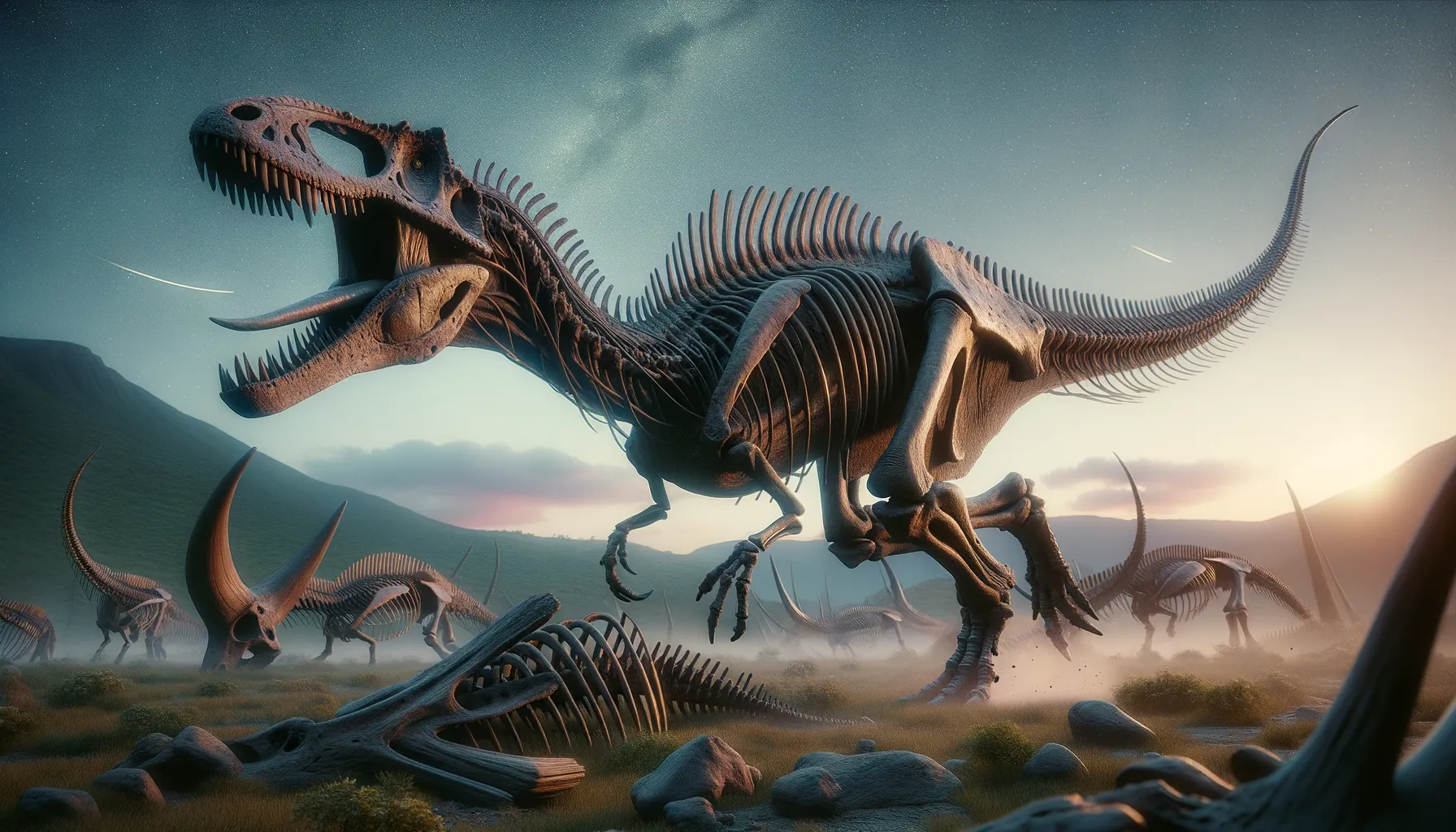
Dromicosaurus
Swift hunter of ancient landscapes.
Period
Cretaceous
Length
Measured around 6 meters in length.
Height
Stood approximately 2 meters tall.
Weight
Estimated to weigh about 500 kg.
Dromicosaurus was a fascinating carnivorous dinosaur from the Cretaceous period. With its sleek build, it was adapted for sudden bursts of speed, perfect for hunting in its prehistoric environment. This dinosaur is particularly notable for its distinctive skeletal features that hint at a complex and agile lifestyle. Its remains offer valuable insights into the predator-prey dynamics of its time.
Diet
Dromicosaurus primarily fed on smaller dinosaurs and other prehistoric creatures. Its sharp teeth and agile nature suggest it was well-equipped to pursue a carnivorous diet with high protein needs.
Hunting
This dinosaur likely used ambush tactics, relying on speed and stealth to catch its prey. Its agility would have been advantageous in navigating the dense vegetation of its habitat while chasing down elusive targets.
Environmental challenges
Dromicosaurus had to contend with fluctuating temperatures and varying food availability. Competition with other carnivores would have been fierce, requiring adaptability in hunting strategies. Natural disasters such as volcanic eruptions or floods could impact their habitat, forcing migrations.
Speed
Dromicosaurus had a moderate speed, adapted for quick bursts.
Lifespan
It likely lived around 10 to 20 years.
First discovery
Discovered in the mid-20th century.
Fun Facts
- Dromicosaurus was a small dinosaur, about the size of a turkey, which made it quite agile and fast.
- This dinosaur had a long tail that helped it maintain balance while running at high speeds.
- Dromicosaurus lived during the late Jurassic period, around 150 million years ago.
- It was likely a carnivore, feeding on small animals and insects, using its sharp teeth to catch prey.
- Fossils of Dromicosaurus have been found in what is now Europe, indicating it roamed that region extensively.
- Dromicosaurus is known for its distinctive grasping claws, which it might have used to catch prey or climb.
- Being a theropod, it is distantly related to modern birds, sharing a common ancestor.
Growth and Development
This dinosaur likely hatched from eggs, growing rapidly in the first few years to reach a stable size. Bone structure studies suggest significant physical changes as it matured, possibly indicating different dietary needs throughout its life stages. As with many dinosaurs, development was influenced by environmental factors and genetic traits.
Habitat
Dromicosaurus thrived in lush forested areas with abundant prey. Its environment provided plenty of cover and resources, essential for its predatory lifestyle. Seasonal changes would have influenced its movements, potentially leading to semi-migratory patterns.
Interaction with other species
While primarily a lone hunter, Dromicosaurus might have formed temporary groups during prime hunting opportunities. It interacted with various herbivorous dinosaurs, which constituted its primary prey. Defensive behavior of prey would provide regular challenges for its hunting success.
Natural lifespan
It naturally lived for about two decades under optimal conditions.
Reproduction
Egg-laying was the reproductive choice for Dromicosaurus, much like many of its contemporaries. Parental care might have been minimal, with hatchlings rapidly becoming self-sufficient. Clutch sizes likely varied, influenced by environmental conditions and available resources.
Social behaviour
Dromicosaurus exhibited mostly solitary behavior, though occasional collaborations for hunting or defense might have occurred. Territorial disputes could be frequent, with displays of dominance ensuring established feeding grounds. Vocalizations or physical signals probably facilitated rare social interactions.
Fossil locations
Fossils have been predominantly found in regions that are today part of modern Europe. These areas reveal a variety of sediment types, suggesting diverse paleo-environments. Recent discoveries in satellite locations have provided further understanding of its range and adaptations.
